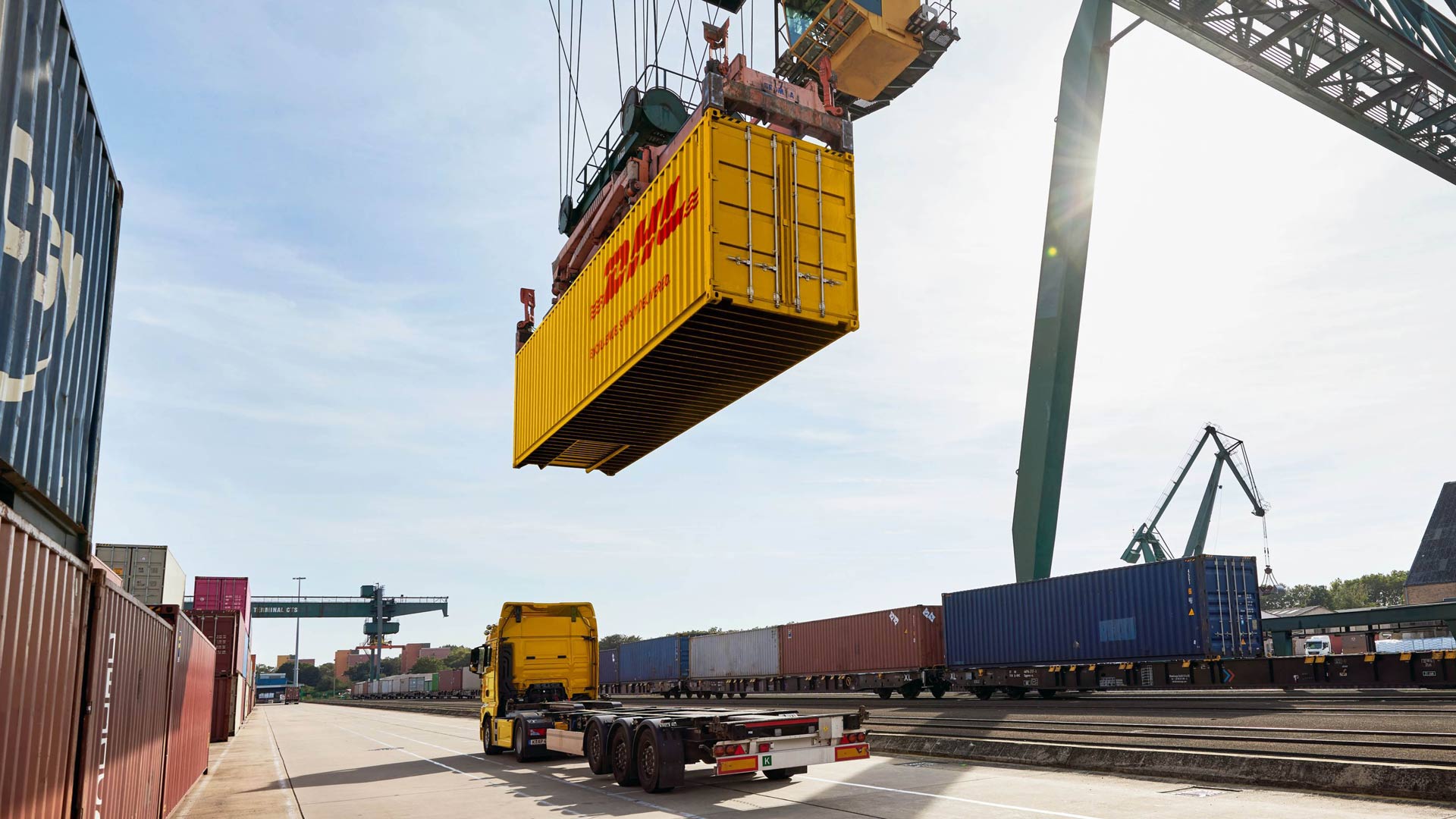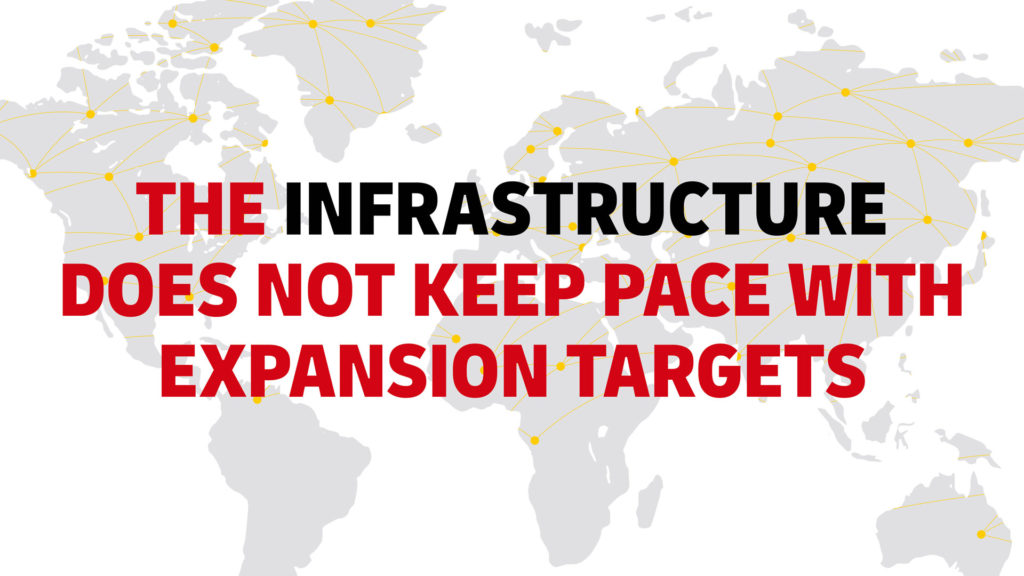The Future of Rail Freight in Europe 23/02/23
< Back to listSource: https://dhl-freight-connections.com/en/trends/the-future-of-rail-freight-in-europe/
The Future of Rail Freight in Europe

Of all modes of transport, rail freight has the best eco-balance. For this reason, the EU and national administrations want to substantially increase the share of rail in the overall freight volume. To emphasize its political will, the EU Commission has declared 2021 to be the European Year of Rail – which is quite a while ago. How far have we come and what does the future hold for rail freight?
Advantages of Rail Freight Primarily in the Ecological Field
In the European Green Deal initiated by the EU Commission, rail freight plays a key role for reducing greenhouse gas emissions. To this end, more freight needs to be transferred from road to rail. The target is to achieve a 30 percent share of rail in European freight transport by 2030.
Undeniably, rail freight offers great potential for emissions savings. E-mobility is already the prevailing standard in the rail freight sector. The more green electricity is used to power locomotives in the future, the faster net emissions will decline toward zero. According to a 2021 study by the European Environment Agency, a freight train emits an average of 24 grams of greenhouse gases per ton transported and kilometer traveled. Already now, this is less than one-fifth of the greenhouse gases produced by road freight.

Even if the development of more sustainable drives on the road proceeds – due to the much larger transport volume of freight trains alone, an expansion of rail freight translates directly into millions of tons of greenhouse gases saved now and in the future.
Obstacles to the Expansion of Rail Freight: Infrastructure and Territorial Fragmentation
The individual member states have very different starting conditions for jointly achieving the EU target. Although the average share of rail freight in the 27 EU member states was 16.8 percent in 2020, there are considerable differences: frontrunner Lithuania has a share of 64.7 percent, Greece a poor 3.2 percent. In Germany, Europe‘s largest economy, it was 17.6 percent in 2021.
But not only the very heterogeneous actual conditions pose a problem. For a common economic area, the lack of standardization on the railways is all the more remarkable. Such a situation would be inconceivable in road freight. On the road, borderless movement of goods is a lived reality, while rail is stalled at almost every border. The main obstacles are inconsistent regulations and differing technical standards in the individual countries: a true territorial fragmentation.
Conditions Change at Each Border
While on the road one driver can steer one truck from Romania to the Netherlands, on the rail it often requires a new train driver for each country with a train driving license valid for that particular country. Or just as in a relay race one might even need different railway undertakings to hand over the wagons at the borders and couple up new locomotives.
This is because locomotives often cannot continue their run at the border for technical reasons – and even if they theoretically could, each locomotive needs registration for each individual country. And the train drivers must speak the respective national language. English has long been the standard language in aviation, but there is no such thing in international rail transport.
Individual national regulations and the lack of European standards further complicate the situation for rail freight. There is not even a uniform EU track width. In Central Europe it is 1,435 millimeters, in the Baltic states 1,520 (a relic from the tsarist era!), and on the Iberian Peninsula 1,668 millimeters. In addition, there are different national security systems, each with its own signals and signs – in contrast, Greek truck drivers understand the traffic signs in Finland perfectly.
Infrastructure Not Keeping Pace with Expansion Targets
A large proportion of European land transport takes place in Germany, and it is here of all places that infrastructure expansion is lagging behind demand – although in 2017 the German government presented a comprehensive package of measures to strengthen rail freight transport in the form of the so-called Rail Freight Masterplan. The national target for Germany set by the current government is to increase the rail freight market share to 25 percent by 2030.

Unfortunately, this underperformance is not only a problem in Germany. Large parts of the rail network in many countries are more than 100 years old, and even though investment in rail is increasing in most places, it will not turn into an efficient network capable of meeting growing transport demand overnight.
Since in many EU countries passenger rail transport is also promoted and the respective rail networks are usually mixed networks for freight as well as passenger transport, the two transport operations often slow each other down.
tally friendly mode of land transport. At a time when climate change is worrying large parts of the population and businesses – if only because of the climate targets – this is rail freight’s greatest asset.
Carsten Knauer BME (German Association for Materials Management, Purchasing and Logistics) Head of Section Logistics/SCM, Specialist Groups Officer after the closing of the 16th BME-/VDV-Forum
This is How the Rail Freight Expansion Can Succeed
To increase the share of rail freight in the European flow of goods and make progress toward the common climate targets, not only better infrastructure but also better cross-border connectivity and interoperability of the individual rail systems are needed. This is the only way to overcome the fragmentation of the market that currently hampers growth.
Specific steps required are:
- Further development of technology with higher automation and digitization. The electrification rate in the rail sector is high, but still expandable. The efficiency of electric locomotives can be optimized. And in addition to drives, innovative coupling and braking technology can also speed up operations.
- Expansion, modernization, and digitization of the rail network. The fastest locomotive is of no use if it is slowed down by inadequate infrastructure capacity. But not only more rails are needed, but also a digital rail network with full transparency of all processes for planning and monitoring rail freight traffic.
- Europe-wide technical standardization and simplification of processes, especially at country borders, for free and unhindered rail traffic within the EU.
- As many links to other modes of transport as possible to promote intermodal transport. Not every commercial area necessarily needs a rail connection. Intermodal transport can combine the advantages of rail and road and cope with the still growing freight volumes.
- Regulatory harmonization of rail freight traffic in the European Single Market (and as far as possible beyond it). One example is the European Rail Traffic Management System (ERTMS), which is intended to integrate the various train control systems into a uniform standard: the European Train Control System (ETCS). The aim is to provide train drivers in the driver’s cab with all the information they need in good time. According to forecasts, however, implementation will probably not be completed until 2040 – a typical example of how slowly development in rail traffic can progress.
Conclusion
Rail freight is an important lever with which transport logistics can make its contribution to achieving global climate protection targets. Political decision-makers must expedite the expansion and modernization of rail infrastructure and create a reliable regulatory framework – and thus the preconditions for technical progress on the rails.
Road freight will in the future continue to be the most flexible form of transport – and usually the only one allowing for door-to-door delivery. That is why truck transports will remain indispensable. The primary goal is to transfer long-distance transports in particular to rail and to combine the individual modes of transport in such a way that the optimum means of transport is used for each route – this is how modern, smart, and sustainable logistics can be achieved.
Frequently Asked Questions
What is rail freight?
Rail freight refers to the supranational transportation of goods by train. Basically, these are commercial services provided by freight trains. Not only the transport itself is part of rail freight: the preparatory and follow-up processes such as loading are also considered part of it.
What are the advantages of rail freight?
Freight transport by train impresses above all in terms of its eco-balance: per ton transported, it emits less than one fifth of the emissions of road freight. Another advantage is the large capacities that can be transported per freight train and the positive future perspective resulting from its sustainability.
What are the challenges facing rail freight?
Infrastructure in particular poses challenges for rail freight: Each country has its own regulations and technical standards, which means that there is usually a stop at the border – and trains must be recoupled, or drivers replaced. Furthermore, rail freight competes with passenger rail service. The expansion of rail networks is not progressing fast enough.
What is the future of rail freight?
Due to the best eco-balance of all modes of freight transport, rail freight will continue to gain in importance in the future. At present, train freight still has to face certain challenges that can only be overcome by close cooperation between as many countries as possible. However, the common interest in a sustainable future can actively promote such cooperation.
How can the expansion of rail freight succeed?
To increase the future viability of rail freight, it is essential to expand, modernize, and digitize the rail networks. At the same time, it is necessary to establish international technological and regulatory standards and to provide links to other modes of transport, such as road freight or transport by ship.






